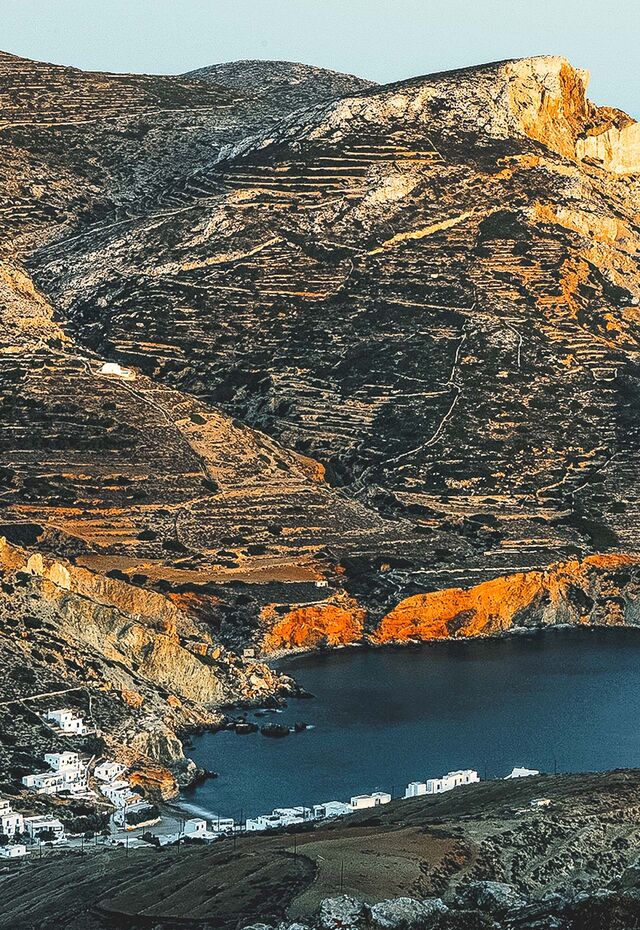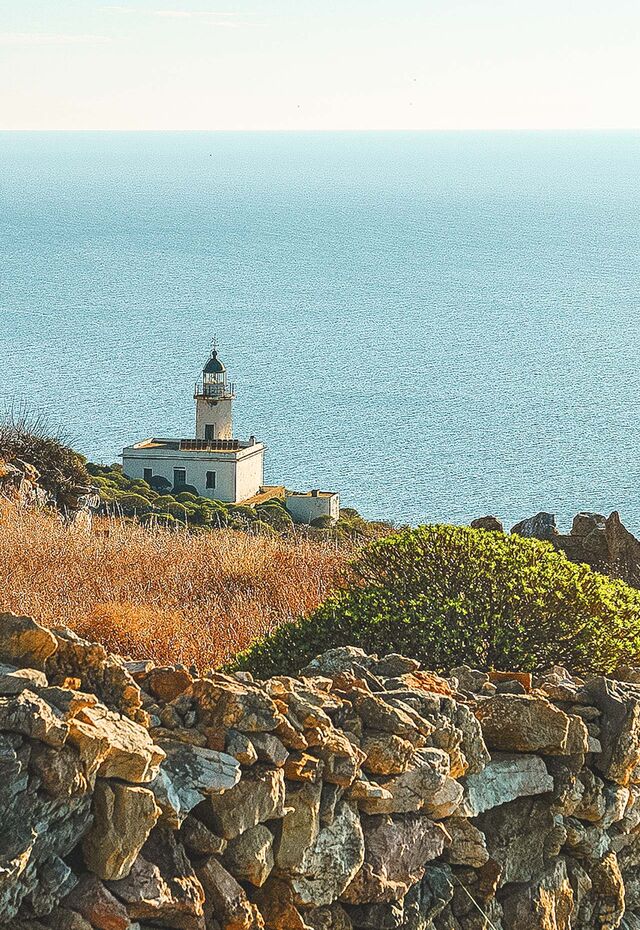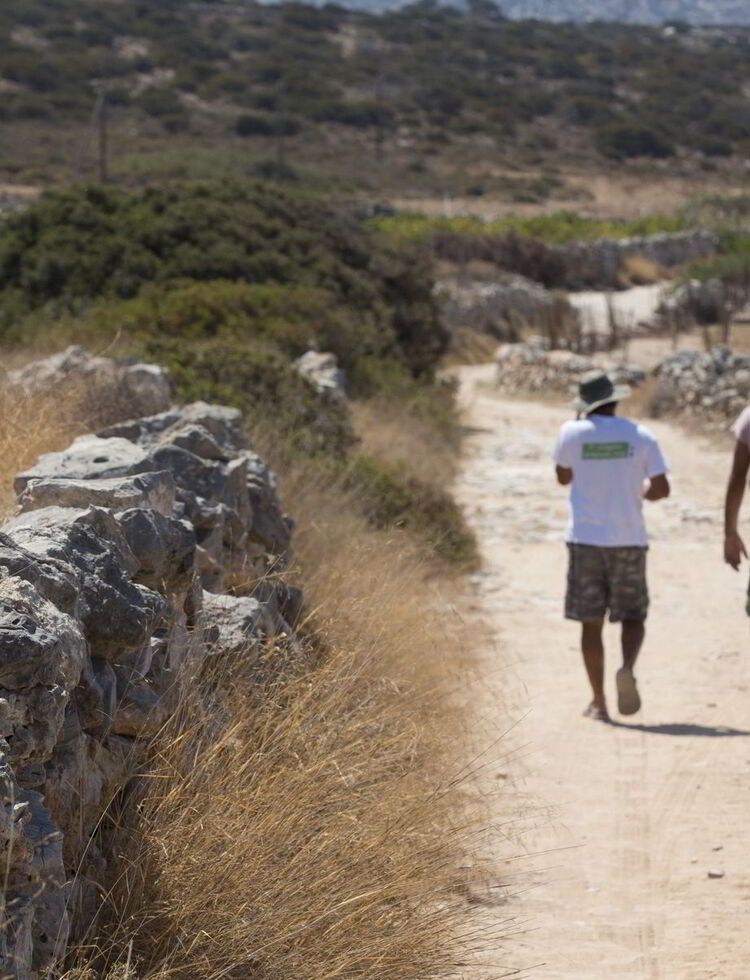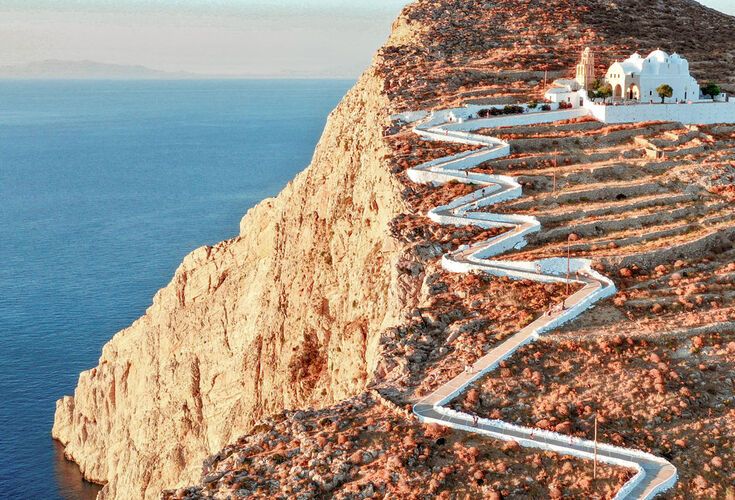Discover the hiking paths of Folegandros


OVERVIEW
It feels like Folegandros’ extensive network of hiking trails was designed specifically for visitors to this quiet and unassumingly beautiful island – so close to Santorini, Milos and Ios that you’ll feel you should have discovered it already, but sharing none of those better-known Cycladic islands’ bustle and buzz.
The trails are some of Folegandros’ original paths, once carrying shepherds and locals from one settlement to another. And there will be times when you’re walking them that you’ll feel like nothing has changed since those days.
Some of the hamlets along the way have been abandoned, but the small churches are still there and the landscape is much the same – with breathtaking Aegean views and beautiful remote beaches. It’s possible to get to some of the same spots by car, but Folegandros is undoubtedly an island that is best discovered on foot.
For tips while hiking in Greece and other useful information, see the Get Planning section below
DON'T MISS
There are plenty of paths to choose from, which are straightforward for all ages, but the one described here is a circular route from the little agricultural village of Ano Meria, to the northeast.
Ano Meria
It says everything about Folegandros that its second-largest settlement has only 350 residents. Ano Meria is true to its agricultural roots and, as you head out on the path south of the village’s two windmills, you’ll be introduced to the so-called Themonies (little clusters of dispersed houses used by animal breeders and other farmers). There’s no better example of the island’s simple, traditional way of life.
Agia Fotini
Around 30mins into your walk, you’ll take a small diversion from the main path up a hill to the little church of Agia Fotini. It’s a good spot for your first magical view of the landscape and sea beyond. You’ll feel beautifully remote amongst the hills.
Aspropounta Lighthouse
It takes around another 30mins to reach the Aspropounta Lighthouse on the northwest coast, built in 1919 almost 60m up on a cliff. Take your time to enjoy the expansive Aegean view. You can head back to Ano Meria from here, but you’ll probably be tempted to continue.
Livadaki Beach
North of the lighthouse, you’ll descend to sea level in a gorgeous little protected bay where you will find a remote, pebbly beach. It’s a perfect spot for a swim and to relax before continuing your journey.
Panagia Nisiotissa
From here, you’ll continue your circular route back towards Ano Meria. The little chapel of Panagia Nisiotissa, on its own high up on the hill, will be your last stop (pop in to light a candle and have one final gorgeous view towards the sea) before continuing to the western edge of Ano Meria, by the little chapel of Taxiarhi. The main road east takes you back to the windmills.
From Hora
- By car or taxi: 5km (10min)
From Karavostasi (port)
- By car or taxi: 8km (14min)
From Angali
- By car or taxi: 3km (6min)
- By bus: There are regular buses from Hora during the summer months, which depart from behind the Town Hall.
- You can hike in Folegandros all year round but the best periods are spring to autumn.
- If you are visiting in the summer months, it’s best to set out early in the morning and make the most of Livadaki Beach before returning to Ano Meria.
- Alternatively, head out in the early afternoon and coincide your return with sunset views from Panagia Nisiotissa.
April-May and October are ideal, when the temperature is cooler and the island is calmer.
- Autumn
- Spring
- Summer
- Winter
Ano Meria to Panagia Nisiotissa (circular route)
- Distance: 5.5km
- Highest point: 250m
- Walking time: 3-4hrs
- Difficulty: Easy to medium
Ano Meria to Hora
- Distance: 10.6km
- Highest point: 259m
- Walking time: 4-5hrs
- Difficulty: Medium
Make sure you have all the correct equipment before setting out:
Hiking is a magical way to enjoy the Greek countryside but make sure to be prepared and protect yourself, especially on very hot days.
- Stay hydrated: Always wear a hat and carry plenty of water with you
- Be weather-wise: Check the weather forecast before setting out. Avoid hiking during the midday heat and extremely hot periods. The best periods for hiking in Greece are during the spring and autumn months
- Plan your walk: Whenever possible, follow marked trails and plan your walk. Ideally, use a guide and never hike alone. Ask for directions if you’re unsure. This helps protect both you and the natural environment
- Stay connected: Have the phone numbers of your hotel and local authorities handy. And make sure your mobile phone is fully charged. The European emergency number 112 is available 24/7, connecting you to local police, fire and ambulance services.


